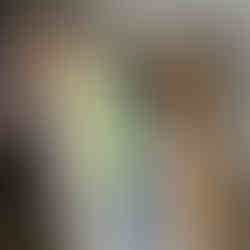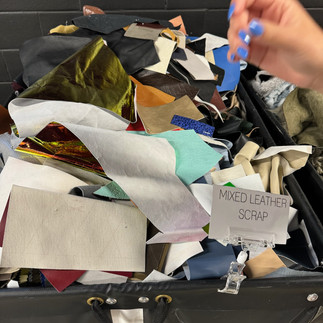Food insecurity + Textiles? How do they relate?!
- malloryhersh
- Jun 20, 2024
- 2 min read
I recently had the chance to volunteer at Fabscrap, an organization that focuses on reducing textile waste by collecting unused fabric from fashion brands and turning it into something useful. It was an incredible experience that opened my eyes to just how much waste the fashion industry generates—and how much potential there is to give those materials a second life.
If you know me, you know that I’m super passionate about addressing food insecurity. Through my work with community food drives and organizations, I've always focused on making sure that everyone has access to healthy, nutritious food. But my time at Fabscrap made me realize that my interests go beyond just food—I also care a lot about how we manage other resources, like textiles.
The connection between my two passions—food insecurity and textiles—might seem a little unexpected at first. But they’re actually tied together through the concept of a circular economy. This idea focuses on creating a system where we don’t just use resources once and throw them away but find ways to keep them in circulation, minimizing waste and making the most of what we already have.
In the same way that food banks rescue edible surplus food to provide meals to people who need them, organizations like Fabscrap help rescue surplus fabric to keep it out of landfills. They find new uses for these materials—whether it’s through upcycling into new designs, using scraps for art projects, or even turning fabric into insulation. It’s all about making sure that valuable resources don’t end up as waste.
Volunteering with Fabscrap was a great reminder that small changes can make a big impact. When we think about the things we buy, use, and throw away—whether it’s food, clothing, or anything else—there are usually ways we can reduce waste and make more thoughtful choices. Just like in food systems, where every leftover ingredient can be part of a new recipe, textiles can also be given a second life instead of ending up in a landfill.
It’s inspiring to see how many people are working to make a difference in this space, whether it’s through reducing food waste or tackling the waste created by the fashion industry. I’m proud to be a part of both of these movements, and I’m excited to continue learning about how we can create a more sustainable world together.
Have you ever thought about how the things you use every day—like food and clothing—fit into a circular economy? Let’s chat about it in the comments!




























Comments